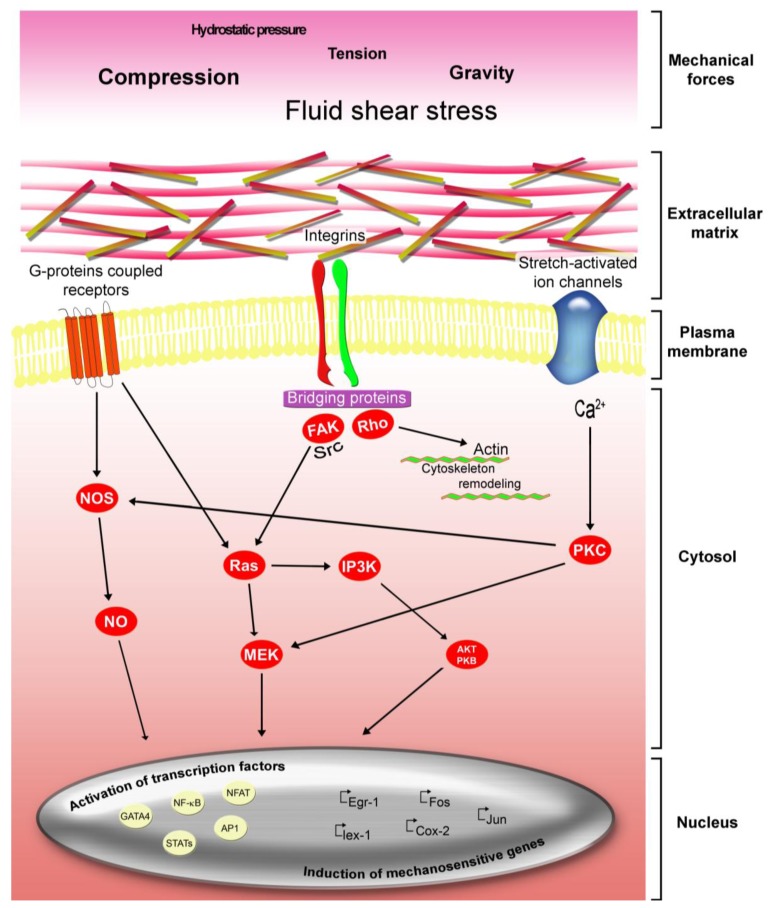Figure 1.
Stem cells respond to different mechanical forces loading by activating multiple intracellular signaling pathways that are implicated in the maintenance and regulation of cellular functions. Stem cells can sense the mechanical loading through a diverse group of membrane-anchored mechanosensors (stretch-activated ion channels, cell-membrane-spanning G-protein-coupled receptors, and integrins). This mechanical stimulus is then converted to biochemical signals by triggering the multi-step activation of downstream partners in an array of signaling cascades in the cytoplasm. The convergence of these pathways results in the activation of select transcription factors, including nuclear factor-B (NF-κB) and nuclear factor of activated T cells (NFAT), which then translocate to the nucleus and modulate the expression of a panel of mechanosensitive genes, including Egr1 and lex1.

